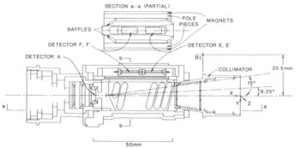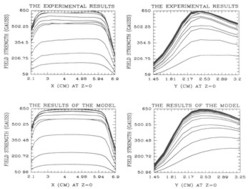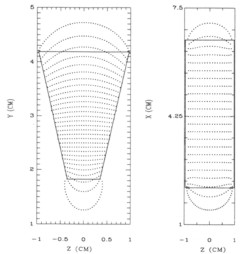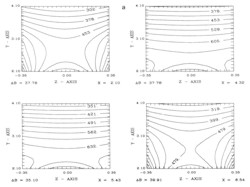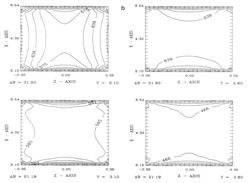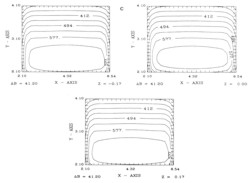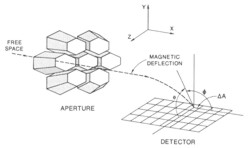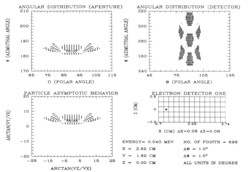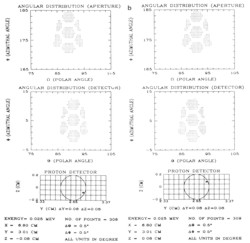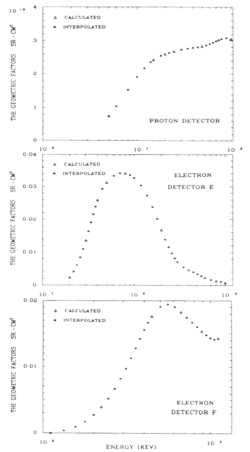The Galileo Energetic Particles Detector
Galileo EPD Handbook
Chapter 1. Instrument Summary
Charged Particle Response of Magnetic Deflection System for Galileo Jupiter Orbiter (draft)
Yue Wu and T. P. Armstrong, Dept. of Physics and Astronomy, University of Kansas, Lawrence, KS 66045
Note: The final version of this paper was published in Nuclear Instruments and Methods in Physics Research, A265, 561, 1988.
Abstract. A simulation of a magnetic spectrometer system and the study of its instrumental response are presented here. An analytic, three-dimensional expression for the inhomogeneous and fringing magnetic field of the system is obtained. A three-dimensional, time-reversed trajectory calculation of electrons and protons inside the system is performed. A clean electron-ion separation and electron analysis are achieved. The geometric factors of the electron and proton detectors for different energies and the particles' angular distributions are determined. It is found that the geometric factors of two electron detectors, E and F, have an appreciable variation for different energies with a maximum at 70 and 500 keV, respectively, whereas the proton detector has monotonic increasing geometric factors as the energy increases.
Introduction
Galileo LEMMS Simulation
Magnetic Field Model
Methods of Calculation
Results of the Simulation
Conclusions
References
Acknowledgements. This work was supported by NASA through the Galileo program. The principal investigator for the EPD experiment is D. J. Williams of the Johns Hopkins University Applied Physics Laboratory.
Figures:
Return to Galileo EPD Handbook Table of Contents Page.
Return to main
Galileo Table of Contents Page.
Return to Fundamental
Technologies Home Page.
Updated 8/23/19, Cameron Crane
QUICK FACTS
Mission Duration: Galileo was planned to have a mission duration of around 8 years, but was kept in operation for 13 years, 11 months, and 3 days, until it was destroyed in a controlled impact with Jupiter on September 21, 2003.
Destination: Galileo's destination was Jupiter and its moons, which it orbitted for 7 years, 9 months, and 13 days.




